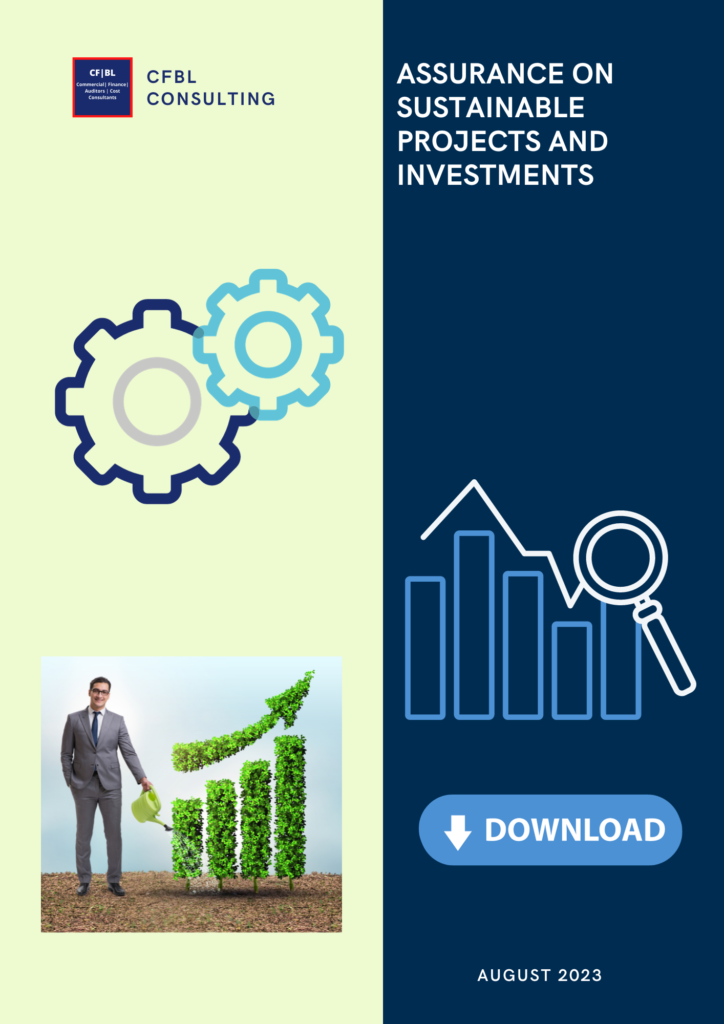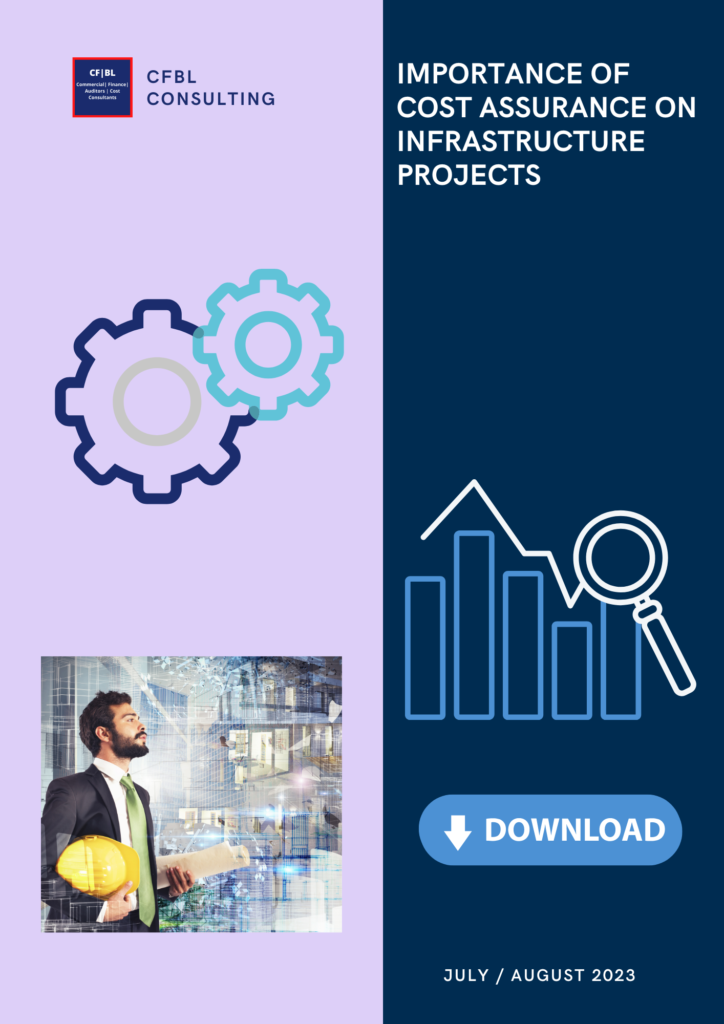
Cecelia Fadipe – CFBL
What is sustainable infrastructure?

Overview
The report delves into the concept and significance of sustainable infrastructure practice, emphasising its commitment to minimising environmental impact, fostering social equity, and ensuring economic viability. Moreover, covering a broad spectrum, it discusses the role of sustainable practice in addressing global challenges like climate change, population growth, and resource scarcity. Hence, the impact of conventional infrastructure on the environment is explored, emphasising the need for a shift toward sustainability.
Introduction
- The report includes regulatory frameworks, technological innovations, life cycle assessments, and community engagement strategies. Moreover, it also highlights the economic benefits and challenges associated with sustainable infrastructure practices, providing recommendations for future projects. In essence, the report comprehensively examines the multifaceted aspects of Eco-friendly infrastructure practice and development and its pivotal role in creating resilient and environmentally conscious built environments.
Environmental Sustainability:
- Eco-friendly Technologies:
- Integrate technologies for reduced resource consumption and environmental impact.
- Renewable Energy:
- Incorporate renewable sources to minimize reliance on fossil fuels.
- Green Materials:
- Use sustainable materials to reduce the environmental footprint.
- Climate Resilience:
- Design infrastructure to withstand climate change impacts.
Economic Sustainability:
- Cost Efficiency:
- Optimise costs across sustainable infrastructure life cycles.
- Job Creation:
- Generate green jobs and economic opportunities locally.
- Innovation:
- Encourage tech advancements for economic growth with minimal negative impacts.
Social Sustainability:
- Community Well-being:
- Prioritise the well-being of affected communities.
- Inclusivity:
- Strive for inclusive development and social equity.
- Health and Safety:
- Implement measures for worker and community health and safety.
Global challenges and trends necessitating sustainable infrastructure
EU’s Next Generation EU plan allocates 30% of funds to sustainable infrastructure, targeting CO2 reduction and climate change mitigation.

Several global challenges and trends necessitate the adoption of sustainable infrastructure to address pressing issues and ensure a resilient and environmentally conscious future. Therefore, some of these challenges and trends include:
Climate Change:
- Rising global temperatures, extreme weather events, and changing precipitation patterns underscore the urgency of developing infrastructure that can withstand and adapt to climate-related challenges.
Population Growth and Urbanization:
- The world’s population is rapidly increasing, leading to a surge in urbanisation. Moreover, sustainable infrastructure is crucial for accommodating growing urban populations while minimising environmental impact and ensuring resource efficiency.
Resource Scarcity:
- Depletion of finite resources, such as water, energy, and raw materials, necessitates the adoption of sustainable practices to ensure responsible resource management and reduce overexploitation.
Environmental Degradation:
- Habitat destruction, deforestation, and pollution threaten biodiversity and ecosystems. Additionally, sustainable infrastructure aims to mitigate these impacts by incorporating eco-friendly construction materials, green spaces, and environmentally conscious design.
Energy Transition:
- The global shift towards renewable energy sources requires infrastructure that supports clean energy generation, distribution, and consumption, reducing dependence on fossil fuels and mitigating the impacts of climate change.
Water Scarcity and Quality:
- Increasing demand for water, coupled with challenges such as droughts and pollution, emphasizes the need for sustainable water infrastructure to ensure reliable supply, efficient distribution, and water quality preservation.
Technological Advancements:
- Rapid technological progress offers opportunities for innovative and sustainable solutions in infrastructure development, including smart technologies, energy-efficient systems, and materials with lower environmental impact.
Social Inequality and Access to Services:
- Addressing social disparities and ensuring equitable access to essential services, such as healthcare, education, and transportation, requires sustainable infrastructure that prioritizes inclusivity and community well-being.
Natural Disasters and Resilience:
- The increasing frequency and intensity of natural disasters, including hurricanes, floods, and earthquakes, highlight the need for infrastructure that is resilient, adaptable, and capable of withstanding unforeseen challenges.
Therefore, addressing these global challenges and trends through sustainable infrastructure development is crucial for creating resilient, adaptable, and environmentally friendly systems that support the well-being of current and future generations.
Importance of sustainable practices in infrastructure development
The future lies in heeding the UN’s New Urban Agenda, promoting sustainable urban development for a decarbonised, renewable energy-driven economy.

Environmental Conservation:
- Sustainable practices help minimize environmental degradation, preserving ecosystems, biodiversity, and natural resources.
Climate Change Mitigation:
- By incorporating sustainable measures, infrastructure projects can reduce their carbon footprint, contributing to global efforts to mitigate climate change.
Resource Efficiency:
- Sustainable infrastructure minimizes resource consumption, promotes recycling, and reduces waste generation, leading to efficient resource use.
Resilience and Adaptability:
- Sustainable designs enhance the resilience of infrastructure, making them better equipped to withstand environmental changes and unforeseen challenges.
Social and Economic Benefits:
- Sustainable infrastructure enhances public well-being, improves access to essential services, creates jobs, and stimulates economic development.
Long-Term Cost Savings:
- While initial costs may be higher, sustainable practices often result in long-term cost savings through energy efficiency, reduced operational expenses, and increased asset longevity.
Regulatory Compliance and Risk Mitigation:
- Incorporating sustainable practices ensures compliance with environmental regulations, reducing the risk of legal issues and financial penalties.
Public Perception and Stakeholder Engagement:
- Projects with sustainable practices are generally well-received by the public, fostering community support and positive stakeholder engagement.
Innovation and Technology Development:
- Sustainable practices drive innovation, encouraging the development and adoption of technologies that contribute to a more sustainable built environment.
Global Responsibility:
- Embracing sustainable practices acknowledges a global responsibility to address shared environmental challenges and work collaboratively towards a more sustainable future.
Impact of conventional infrastructure on the environment and society
Sustainable infrastructure is closely tied to the United Nations’ Sustainable Development Goals. Moreover, Goal 9 specifically focuses on building resilient infrastructure, promoting inclusive and sustainable industrialisation, and fostering innovation.

Environmental considerations play a pivotal role in sustainable infrastructure development. In addition to it, here are key environmental considerations in infrastructure development:
Biodiversity Conservation:
- Infrastructure projects should minimise impacts on local flora and fauna through careful planning, including measures like green corridors and wildlife crossings.
Habitat Protection:
- Identifying and safeguarding critical habitats during planning is crucial, aiming to avoid disruptions to sensitive ecosystems, wetlands, and vital habitats supporting diverse species.
Reducing Greenhouse Gas Emissions:
- Essential for combating climate change, measures to reduce the carbon footprint include incorporating energy-efficient designs, using low-carbon materials, and integrating renewable energy sources.
Energy Efficiency:
- Designing infrastructure with energy efficiency in mind reduces environmental impact, involving the incorporation of energy-efficient technologies, optimised building designs, and the promotion of sustainable energy sources.
Water Management:
- Efficient water use, stormwater management, and water quality protection are integral to sustainable infrastructure, preventing over-extraction and ecosystem disruption.
Waste Reduction and Recycling:
- Minimise construction waste, promote material recycling and implement waste reduction strategies for environmentally responsible infrastructure.
Sustainable Materials:
- Choose eco-friendly construction materials considering life cycle, recycled content, and lower environmental impact for sustainable infrastructure development.
Land Use Planning:
- Minimise land-use change, deforestation, and soil erosion in infrastructure planning to preserve natural landscapes and protect biodiversity.
Mitigating Pollution:
- Control air, water, and soil pollution in infrastructure projects through pollution control technologies and effective management of construction site runoff.
Climate Resilience:
- Plan for climate resilience in infrastructure development, preparing for extreme weather events and rising sea levels associated with climate change.
Eco-Friendly Construction Practices:
- Adopt low-impact construction methods to minimise environmental impact and contribute to sustainable infrastructure development.
Social and Economic Benefits of Sustainable Infrastructure
According to a UN report, the construction sector’s CO2 emissions hit new high in 2022, leaving it off track to decarbonise by 2050.

Sustainable infrastructure provides various social and economic benefits that extend beyond traditional development approaches. Furthermore, there are key social and economic benefits of sustainable infrastructure:
Social Benefits:
- Improved Public Health:
- Sustainable infrastructure promotes cleaner air, water, and environments, contributing to better public health outcomes by reducing pollution-related illnesses and improving overall well-being.
Enhanced Quality of Life:
- Sustainable urban planning and infrastructure create livable, walkable communities with access to green spaces, public amenities, and cultural facilities, enhancing the overall quality of life for residents.
Community Engagement:
- Involving local communities in the decision-making process fosters a sense of ownership and pride in infrastructure projects. Furthermore, community engagement ensures that projects align with the needs and aspirations of the people they serve.
Social Equity:
- Sustainable infrastructure aims to address social disparities by ensuring that benefits are distributed equitably across diverse populations. Also, this includes providing equal access to essential services, transportation, and public spaces.
Inclusive Design:
- Sustainable infrastructure emphasises inclusive design practices, making public spaces accessible to people of all abilities and addressing the needs of vulnerable or marginalized communities.
Job Creation:
- Sustainable infrastructure projects generate employment opportunities, contributing to local economies and helping alleviate unemployment in the short term.
Education and Skill Development:
- Infrastructure projects often provide opportunities for skills training and education, fostering the development of a skilled workforce within communities.
Resilience to Disasters:
- Sustainable infrastructure enhances community resilience to natural disasters by incorporating designs that can withstand and recover from extreme events, reducing the social impact of disasters.
Economic Benefits:
- Long-Term Cost Savings: Although initial costs may be higher, sustainable infrastructure projects often result in long-term cost savings through energy efficiency, reduced maintenance costs, and extended asset life cycles.
Challenges and Barriers to Sustainable Infrastructure Development
Infrastructure development must be sustainable in light of the world’s increasing urbanisation. As the world’s population approaches 8.5 billion, 60% of people will live in cities.

The development of sustainable infrastructure faces several challenges and barriers, ranging from financial constraints to regulatory hurdles. Additionally, here are some key challenges:
High Initial Costs:
- Challenge: Implementing sustainable practices may have higher upfront costs.
- Barrier: Limited budgets may hinder investment in sustainable infrastructure.
Limited Financial Incentives:
- Challenge: Insufficient financial incentives for sustainable projects.
- Barrier: Short-term financial considerations may overshadow long-term benefits.
Regulatory Frameworks:
- Challenge: Inconsistent or inadequate regulations for sustainable infrastructure.
- Barrier: Ambiguous regulations can impede project planning.
Public Awareness:
- Challenge: Limited public awareness of sustainable infrastructure benefits.
- Barrier: Lack of public support may hinder project acceptance.
Technological Innovation:
- Challenge: Rapid technological advancements in sustainable solutions.
- Barrier: Limited access to cutting-edge technologies can impede progress.
Interconnected Systems:
- Challenge: Complex integration with existing infrastructure.
- Barrier: Existing systems may not easily accommodate sustainability.
Political Will:
- Challenge: The need for political prioritisation of sustainability.
- Barrier: Without strong leadership, sustainability may not be prioritised.
Project Lifecycle:
- Challenge: Comprehensive understanding of the project lifecycle.
- Barrier: Limited focus on sustainability throughout all phases.
Access to Financing:
- Challenge: Limited financing for sustainable projects.
- Barrier: Difficulty in securing investments may slow progress.
Global Economic Conditions:
- Challenge: Economic fluctuations impacting funding availability.
- Barrier: Unfavorable economic conditions may divert resources from sustainability.
Regulatory Frameworks and Standards
The growing momentum towards sustainable infrastructure is evident as more projects align with rigorous regulatory frameworks.

National Regulations:
- Govern environmental assessments and construction codes. e.g., The National Environmental Policy Act (NEPA) in the United States.
International Agreements:
- Influence national policies through global initiatives like the Paris Agreement and SDGs.
UN Sustainable Development Goals (SDGs):
- Include targets related to sustainable infrastructure, climate action, and sustainable cities.
Envision Sustainable Infrastructure Rating System:
- Assesses projects based on quality of life, leadership, and resource allocation.
ISO 14001 (Environmental Management System):
- Provides a systematic approach for organizations to manage environmental impact.
GRESB (Global ESG Benchmark for Real Assets):
- Assesses ESG performance of real assets, including infrastructure.C40 Cities
Climate Positive Development Program:
- Certifies urban development projects with a positive impact on climate change.
EDGE (Excellence in Design for Greater Efficiencies):
- Certifies resource-efficient and sustainable designs.
Sustainable Sites Initiative (SITES):
- Rates sustainable land development and landscaping projects.
Benefits:
Quality Assurance:
- Ensures adherence to recognized standards for quality in design and execution.
Investor Confidence:
- Enhances investor confidence with measurable sustainability criteria.
Risk Mitigation:
- It helps mitigate regulatory risks and ensures compliance.
Global Alignment:
- Promotes consistency in sustainable practices globally.
Innovation Encouragement:
- Drives innovation by setting benchmarks for sustainable practices.
Community Engagement:
- Demonstrates a commitment to community well-being, fostering positive relationships.
- Certifies urban development projects with a positive impact on climate change.
Technological Innovations in Sustainable Infrastructure
The 2030 Digital Compass sets ambitious targets for digital connectivity. Moreover, the uptake of fixed very high capacity network (VHCN) connectivity has improved considerably, reaching 70.2% of households in 2021.

Renewable Energy Integration:
Solar and Wind Advancements:
- Efficient and cost-effective solar and wind technologies integrated into infrastructure.
- On-site energy generation and wind farms for clean energy.
Innovative Hydropower:
- Next-gen hydropower technologies, including kinetic energy harvesting.
- Integration of small-scale hydropower in urban infrastructure.
Smart Technologies for Resource Management:
IoT and Real-time Analytics:
- Sensor networks for real-time monitoring and optimising energy and water use.
- Smart grids for enhanced energy distribution.
Building Management Systems:
- Intelligent controls for lighting, heating, and cooling to boost energy efficiency.
- Automation for optimal resource utilisation in buildings.
Advanced Water Management:
- Sensor-based irrigation for precision agriculture.
- Smart water grids to detect leaks and optimise distribution.
Innovative Construction Materials and Methods:
Recycled and Sustainable Materials:
- Use of recycled steel, concrete, and sustainable materials like bamboo.
- 3D printing for resource-efficient construction.
3D Printing for Construction:
- Rapid and efficient construction using 3D printing.
- Customisation to reduce waste and enhance efficiency.
Digital Modeling with BIM:
- Building Information Modeling (BIM) for efficient project planning.
- Collaboration for sustainable construction practices.
Benefits:
Environmental Impact Reduction:
- Lower carbon footprint through renewable energy and sustainable construction.
Resource Efficiency:
- Smart technologies optimize energy, water, and material usage.
Cost Savings:
- Reduced operational costs with energy-efficient systems and sustainable materials.
Resilience and Safety:
- Infrastructure resilience to environmental changes and safer construction methods.
Quality of Life Improvement:
- Smart, sustainable infrastructure enhances community well-being.
Recommendations for Future Sustainable Infrastructure Projects
The global smart infrastructure market has been growing. As of 2020, it was valued at over $27 billion, and it is projected to reach over $66 billion by 2026, according to a report by MarketsandMarkets.

Renewable Energy Integration:
- Evaluate and incorporate diverse renewable energy sources, such as solar, wind, and hydropower, to diversify the energy mix and reduce environmental impact.
Smart Technologies for Efficiency:
- Implement advanced sensor technologies, artificial intelligence, and data analytics to optimise energy usage, water consumption, and overall resource management.
Innovative Construction Materials:
- Research and adopt cutting-edge sustainable materials, including recycled steel, bamboo, and eco-friendly composites, to minimise the environmental footprint in construction.
Resilient Design for Climate Change:
- Conduct thorough climate risk assessments and design infrastructure projects with adaptive features to withstand the impacts of climate change, including rising sea levels and extreme weather events.
Life Cycle Cost Optimisation:
- Conduct life cycle cost analyses to identify opportunities for cost optimisation in construction, maintenance, and operation phases, considering factors like energy efficiency and durability.
Community Engagement:
- Establish participatory processes that involve local communities in decision-making, ensuring their input is considered in the planning and execution of infrastructure projects.
Inclusive Development:
- Prioritise designs that consider diverse needs, ensuring infrastructure accessibility for all individuals, including those with disabilities, and fostering social inclusivity.
Green Job Creation:
- Identify opportunities within the project scope to create jobs that align with environmental sustainability, such as roles related to renewable energy installation, green construction, and ecological restoration.
Technological Innovation:
- Foster a culture of innovation by incentivising research and development in sustainable technologies, encouraging the adoption of efficient and low-impact construction methods.
Health and Safety Measures:
- Implement stringent health and safety protocols for workers, including training programs, protective equipment, and measures to minimise environmental health risks to both workers and local communities
.
Frequently asked QUESTIONS
Explore common queries about integrating sustainable practices on infrastructure projects, providing clear and concise answers to help navigate key aspects and gain a deeper understanding.
Q: Why is it important to integrate sustainable practices in infrastructure projects?
A: Integrating sustainable practices is essential to ensure that infrastructure development aligns with environmental responsibility, economic viability, and social inclusivity. This approach fosters long-term benefits for communities and the planet.
Q: How can environmental impact be minimized during infrastructure development?
A: Comprehensive Environmental Impact Assessments (EIAs), incorporation of green design principles, and utilisation of renewable energy sources are effective ways to minimise environmental impact.
Q: What role does community engagement play in sustainable infrastructure projects?
A: Community engagement is crucial for understanding local needs, gaining support, and ensuring that infrastructure projects are inclusive, addressing social equity concerns.
Q: How can waste reduction be achieved in construction projects?
A: Implementing waste reduction strategies, such as recycling construction materials, promoting circular economy practices, and minimising landfill impact, can achieve significant reductions in construction waste.
Q: What are some examples of sustainable materials used in infrastructure construction?
A: Sustainable materials include recycled steel, bamboo, eco-friendly composites, and other materials that reduce the environmental footprint.
Q: How can water conservation be integrated into infrastructure projects?
A: Utilising water-efficient technologies like rainwater harvesting and efficient irrigation systems can significantly reduce water consumption and promote responsible water management.
Q: What measures can be taken to create a climate-resilient infrastructure?
A: Designing infrastructure projects to withstand and adapt to climate change impacts, considering factors like extreme weather events and rising sea levels, is crucial for creating climate-resilient infrastructure.
Q: How does the integration of renewable energy contribute to sustainability?
A: Incorporating renewable energy sources, such as solar panels and wind turbines, reduces reliance on non-renewable energy, lowering carbon emissions and promoting environmental sustainability.
References
- SDG 9 – Industry, innovation and infrastructure. Build resilient infrastructure, promote inclusive and sustainable industrialisation and foster innovation.Data extracted in April 2023.Planned article update: June 2024.
- Iberdrola – Sustainable infrastructure, a must in the fight against climate change. R&D Society
- PWC – Global infrastructure trends
- The-critical-role-of-infrastructure-for-the-SDGs_EN.pdf
- The Multiple Benefits of Natural Infrastructure by Dimple Roy
- The Economic Benefits of Green Infrastructure A Case Study of Lancaster, PA
- What Matters in Achieving Infrastructure
- Sustainability through Project Management Practices: A Preliminary Study of Critical Factors – MDPI
- Policy briefing: sustainable infrastructure – PRIOvercoming Barriers to Green Infrastructure – EPA
- Strategic Policies for Sustainable Infrastructure – OCED
- Your guide to addressing sustainability in digital infrastructure – Telehouse
- Overcoming Barriers to Green Infrastructure – EPA
- 8 Transformational Technologies for Sustainable Facility Management – Planon
- We Build – Sustainable development
- Beyond Green Spaces: Exploring Key Elements for Sustainable Infrastructure UBQ Editorial Team 5 Jul 2023
- What airports will look like in 2050: the 5 megatrends of the future – Infra Journal Newsroom
- A better way to build – promoting sustainable infrastructure ROBERT MONTGOMERY
- Strategic Policies for Sustainable Infrastructure – OCED
- Sustainable Project Management – LINQ



